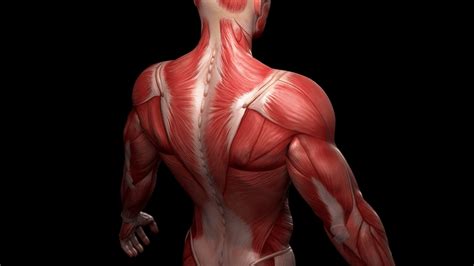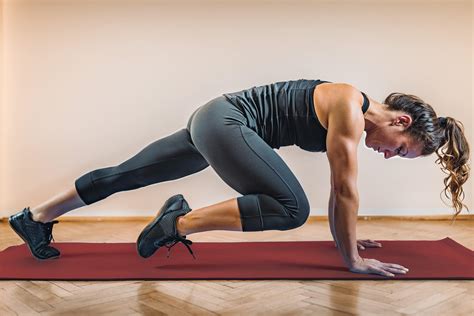What’s the most time-efficient workout split for peak muscle & strength gains?

In the relentless pursuit of peak muscle and strength, many lifters face a common dilemma: how to maximize results without spending endless hours in the gym. The key often lies not in the sheer volume of training, but in the intelligent design of your workout split. This article delves into the most time-efficient workout splits that prioritize effective frequency and volume to deliver superior gains for both muscle hypertrophy and strength development.

The Science of Training Frequency and Volume
For natural lifters, stimulating a muscle group more frequently tends to be more effective for growth than training it once a week with extremely high volume. This is because muscle protein synthesis (MPS) is elevated for approximately 24-48 hours post-workout. By hitting a muscle group 2-3 times per week, you capitalize on these elevated MPS rates more often, leading to greater accumulated growth over time. The challenge is to distribute your weekly volume intelligently across these sessions without overtraining or making individual workouts excessively long.
Volume, defined as sets x reps x weight, is also a critical driver of hypertrophy and strength. However, there’s a point of diminishing returns. More isn’t always better, especially when time is a constraint. The goal is to find the minimum effective dose that stimulates growth and strength adaptation, and then progressively overload.

Analyzing Popular Workout Splits for Efficiency
Let’s examine common workout splits through the lens of time efficiency and effectiveness:
- Full Body Split (3 days/week): This split involves training all major muscle groups in each session, typically three non-consecutive days a week. It offers the highest frequency for each muscle group, hitting them three times weekly. This is incredibly time-efficient per muscle group and allows for ample recovery between sessions.
- Upper/Lower Split (4 days/week): Here, you alternate between upper body and lower body workouts, often structured as Upper-Lower-Rest-Upper-Lower-Rest-Rest. Each muscle group is trained twice a week, providing excellent frequency and allowing for more specific volume per session than a full-body workout.
- Push/Pull/Legs (PPL) (3 or 6 days/week): The PPL split divides workouts by movement pattern. If done 3 days a week, each group is hit once. If done 6 days a week (PPLPPL), each group is hit twice. While effective, the 6-day version can be time-consuming, and the 3-day version lacks optimal frequency for natural lifters.
- Bro Split / Body Part Split (5-6 days/week): This traditional split dedicates an entire session to one or two muscle groups (e.g., Chest Day, Back Day). While popular, it’s generally the least time-efficient for natural lifters seeking optimal gains, as each muscle group is only trained once per week, missing out on higher frequency benefits.

The Most Time-Efficient Champions: Full Body and Upper/Lower
For those prioritizing time efficiency alongside peak muscle and strength gains, the Full Body Split (3 days/week) and the Upper/Lower Split (4 days/week) stand out as the clear winners.
The Full Body split is arguably the most time-efficient. With just three gym sessions a week, you get optimal training frequency (three times per muscle group) and ample rest days. This format forces you to prioritize compound movements and be efficient with your exercise selection, which is excellent for strength and overall muscle mass development. Each workout might be slightly longer than a single “upper” or “lower” session, but the total weekly gym time is minimized.
The Upper/Lower split offers a fantastic balance. Training four days a week, it still provides high frequency (twice per muscle group) and allows for a slightly higher volume per muscle group per session without making the workouts excessively long. This can be beneficial for those who want a bit more targeted volume than a full-body routine might allow in a single session, while still getting frequent stimulation.

Maximizing Gains Within Your Chosen Split
Regardless of whether you choose a Full Body or Upper/Lower split, adhere to these principles to maximize your time-efficient gains:
- Prioritize Compound Movements: Exercises like squats, deadlifts, bench press, overhead press, and rows engage multiple muscle groups, providing the biggest bang for your buck in terms of muscle activation and strength development.
- Progressive Overload: Consistently strive to increase the weight, reps, or sets over time. This is the fundamental driver of muscle and strength adaptation. Without it, your muscles have no reason to grow stronger.
- Focus on Form: Quality over quantity. Poor form increases injury risk and reduces muscle activation. Master the movement patterns before chasing heavy weights.
- Manage Rest Periods: Keep rest periods between sets efficient. For strength-focused compound movements, 2-3 minutes might be necessary. For accessory work or hypertrophy-focused sets, 60-90 seconds is often sufficient. Consider supersets or circuit training for even greater time efficiency, where appropriate.
- Nutrition and Recovery: No split, no matter how efficient, can overcome poor nutrition or inadequate sleep. Ensure you’re eating enough protein and calories, and getting 7-9 hours of quality sleep.

Conclusion
For peak muscle and strength gains coupled with time efficiency, the Full Body (3x/week) and Upper/Lower (4x/week) workout splits are unequivocally superior. They leverage higher training frequencies, allowing you to stimulate muscles more often for growth, and encourage intelligent volume distribution. By integrating compound movements, progressive overload, and smart recovery, you can build an incredibly effective and sustainable training regimen that fits into a busy lifestyle, proving that you don’t need to live in the gym to achieve impressive results.









